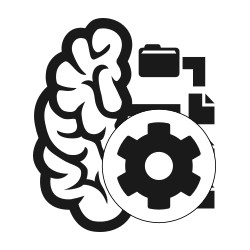- Is there a BIDS App template?
- Which container should I use to start building my BIDS App?
- API
- Is it mandatory to first check the dataset validity using the BIDS-validator?
- How do I upload my BIDS App to the BIDS App Github org?
- Testing Data
- Versioning
- When is a new image deposited to Docker Hub?
- How to tag a new release?
- How should I version my BIDS App?
- I want to release a new version of a BIDS App, but the pipeline version is the same?
- Where should I describe changes between versions?
- How can I check a version of a container I have available locally?
- How can I download a particular version of a BIDS App?
Is there a BIDS App template?
Have a look at the example BIDS App repository. A minimalist example of a BIDS App consisting of a Dockerfile and a simple entry point script (written in this case in Python) accepting the standard BIDS Apps command line arguments.
Which container should I use to start building my BIDS App?
The only minimum requirements of a BIDS App’s container is its ability to run your pipeline. So for example, if your App is mostly Python based it should be sufficient to start with any image that has Python and include your environment dependencies.
API
What should the API of my BIDS App look like?
The obligatory arguments of the API of any BIDS App are:
bids_diroutput_diranalysis_level
with an API call that would look like this:
app_name bids_dir output_dir analysis_level
Can I add more arguments to the API of my App?
Every BIDS App must use the mandatory arguments mentioned above, but you are free to add more that are specific to the task your App will perform.
We recommend you follow the guidelines mentioned in the BIDS extension proposal 027 for more information on specifying the API of your App.
What the kinds of analysis levels (participant and group) mean?
Generally, participant means individual level analysis (for instance: single
subject) The group level analysis can be thought of as the second step, where
the input becomes the output of the participant level analysis.
For example, generating statistic maps of each subject’s brain could be
considered participant, while generating the average of these maps across the
dataset could be considered group.
What do we do if our application does not have any use for the group level analysis?
If your pipeline has no need for group level analysis, it is fine if it is only valid for the analysis_level argument (see fmriprep)
Is it mandatory to first check the dataset validity using the BIDS-validator?
It is an extremely helpful feature to have validation of the dataset as part of your tool. However, it’s not considered mandatory. For instance: many Apps will simply fail with an error message if the dataset is not BIDS compliant.
How do I upload my BIDS App to the BIDS App Github org?
You can release BIDS Apps using your own or your lab’s account. However, if you want to be added to the BIDS docker hub, please message the BIDS maintainers to have a repo created for you.
If you base your code on https://github.com/bids-apps/example deployment on docker hub will happen automatically via Circle-ci.
If you want your App to show on the BIDS App website
here), you will in any case have to
update the _config.yml in the
BIDS App website repository.
Testing Data
For both lightweight and full datasets to test your BIDS App, you can choose from one of these example datasets
Versioning
When is a new image deposited to Docker Hub?
Even though Docker image is being build on the CI server each time you push a commit to the repository it is not automatically being pushed to Docker Hub. Only if you tag a commit, push the tag to GitHub, and the tests you configured pass a new image will be deposited in Docker Hub.
How to tag a new release?
git tag v0.0.1
git push
How should I version my BIDS App?
Since most BIDS Apps are just thin wrappers around existing pipelines it would
be most sensible to use the same version as the software they are wrapping. For
example in case of HCP Pipelines this would be v3.17.0.
I want to release a new version of a BIDS App, but the pipeline version is the same?
This can happen when only the runscript or the Dockerfile changed?
According to semantic versioning we should use the + signed followed by the
build number. Unfortunately Docker Hub does not support semantic versioning. The
best option is to use the - sign followed by the build number. For example
v3.17.0-3.
Where should I describe changes between versions?
After tagging a new release it is important to provide a list of changes on the GitHub Releases page. It accepts markdown syntax and allows you to explain in detail what has changed. Here’s an example.
How can I check a version of a container I have available locally?
Inside each BIDS App there is a /version file with the version number. This file is automatically populated with tag used to trigger the build on the CI server.
How can I download a particular version of a BIDS App?
All versions of BIDS Apps are archived on Docker Hub. To access a particular version you should refer to a specific Docker Hub tag. For example:
docker pull bids/example:v0.0.5
